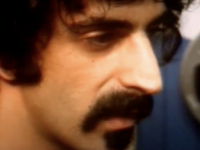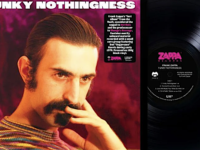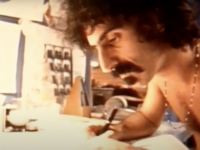Listening to excerpted guitar solos is like viewing abstract art: It’s a glimpse of something that doesn’t necessarily have to make sense in the general definition of the term. Were we talking about most guitarists, an album of extracted solos would likely be a pretty dreadful proposition. When it comes to Frank Zappa on Trance-Fusion, however, it truly was art – and it truly was abstract.
Few guitarists possess the skill or prowess to make their solos for the same songs sound entirely different from performance to performance. As this Oct. 24, 2006 release shows, however, that’s just what Frank Zappa set out to do at every concert.
Like a good artist, Zappa utilized the same tools day after day but, unlike most of his contemporaries, he never relied upon a preconceived solo for each song on tour. Instead, working as if at a painter’s easel, he tossed notes on his canvas in splishes and splashes, gesturing in broad strokes that created new compositions from his starting-point songs.
The results are sometimes slashing (as in “Butter Or Cannons” and the chugging of “Ask Dr. Stupid”), and at others delicate (check out the thoughtful tinkling of “After Dinner Smoker” and “Finding Higg’s Boson”) – but all of it underscores just how many textures and moods Zappa was capable of creating. The solos were as imaginative and fascinating as the songs themselves, and that still speaks volumes for the creativity of the man.
But these are not songs per se: Finished before Zappa died in 1993 but long-delayed, Trance-Fusion offered no traditional structures to hang onto, no choruses, few repeated elements, and little in the way of predictability. That Zappa preferred it if you allowed these solos to just “be” is probably an understatement. They stand on their own, but Trance-Fusion really works best as a whole statement.
It should be taken in one sitting where the album is allowed to unfold like a suite, progressing from one movement to the next instead of feeling like 16 naked Frank Zappa solos.
Trance-Fusion was created out of unplanned guitar excursions from a master of six-string expression. So, why does it seem so surprising that everything comes together so satisfyingly as a finale when the applause of closing track “Bavarian Sunset” fades out? Perhaps, to return to abstract painting, it makes more sense that instead of an end, it’s simply that the canvas has only finite space.
At some point, the artist must splash out those last drops of paint in just the right spots in just the right way, maybe not to the point that it feels finished, but that it just feels right that he’s finally put away his tools.
- How David Bowie’s ‘Reality’ Stood Out For What It Was Not - September 29, 2023
- Metallica’s ‘St. Anger’ Was Always Much Better Than They Said - June 8, 2023
- How King Crimson Defined an Unsettled Post-9/11 Landscape on ‘Power to Believe’ - March 5, 2023




